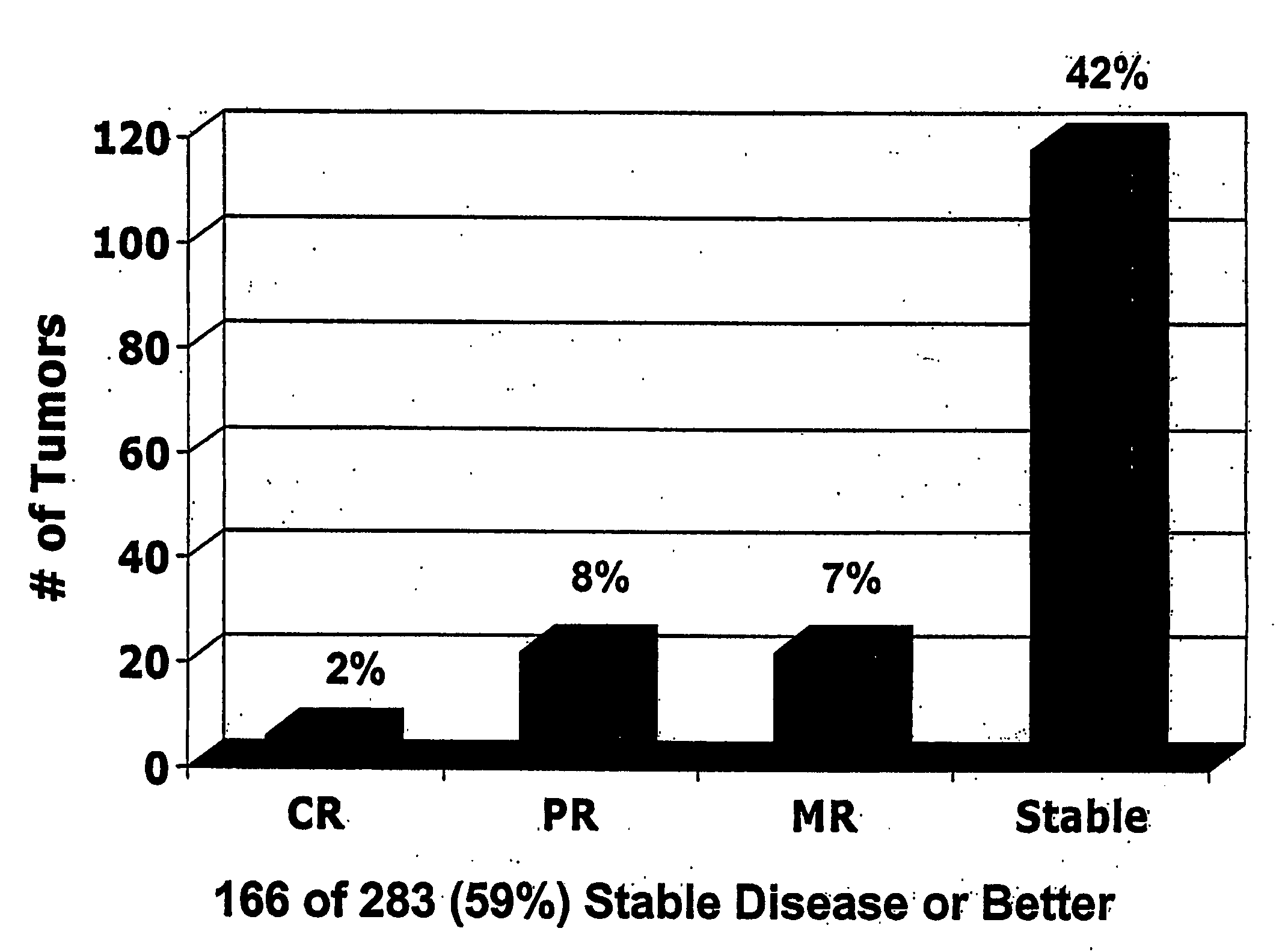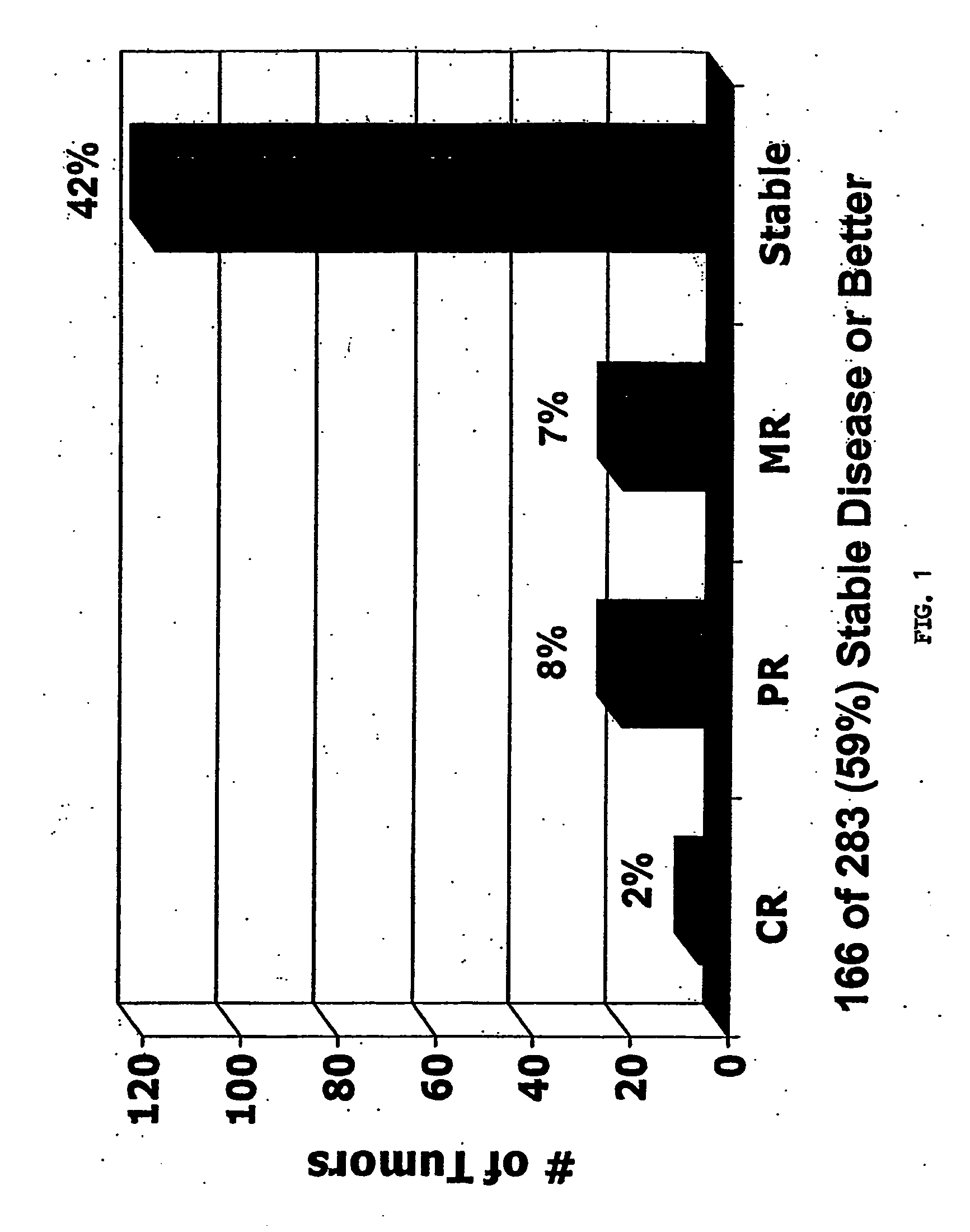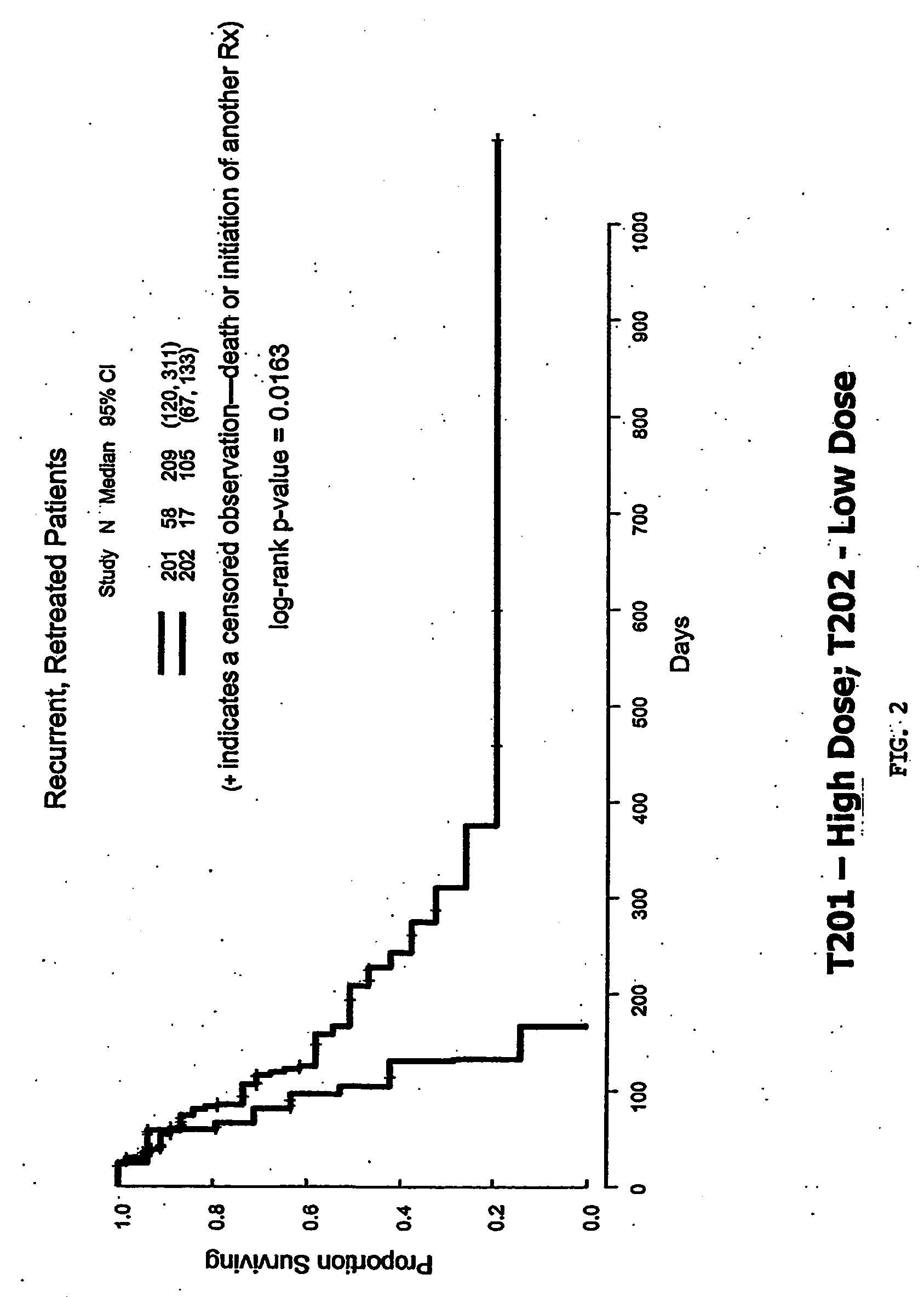Combination of Ad-P53 and Chemotherapy for the Treatment of Tumours
a technology of adp53 and chemotherapy, which is applied in the field of oncology, pathology, molecular biology and gene therapy, can solve the problems of tumor cell resistance to radiation and chemotherapeutic drugs
- Summary
- Abstract
- Description
- Claims
- Application Information
AI Technical Summary
Benefits of technology
Problems solved by technology
Method used
Image
Examples
example 1
Materials and Methods
[0260]Three open label Phase 2 clinical trials were conducted to examine the efficacy of adenoviral-p53 (Advexin®) therapy on recurrent squamous cancer cell of the head and neck (SCCHN). Qualifications for the trails were local or regional recurrent SCCHN, prior treatment with standard radiation (5000 cGy), bidimensionally measurable disease (7.5 cm), absence of CNS metastasis, and Karnofsky performance status of ≧60%. Several different treatment regimens were included:[0261]T207 (high dose): 0.5-2×1012 viral particles, based on tumor volume (regimen A=injection on day 1; regimen B=injection on days 1, 3, 5, 8, 10 and 12);[0262]T201 high dose): 0.5-2×1012 viral particles, based on tumor volume (regimen A=injection on days 1, 2 and 3; regimen B=injection on days 1, 3, 5, 8, 10 and 12); and[0263]T202 (high dose): 0.1-4×1010 viral particles, based on tumor volume (injection on days 1, 2 and 3).
Injections were intratumoral. As stated above, all patients had been tre...
example 2
Results
[0264]The objective of these studies was to evaluate the safety and efficacy of adenoviral p53 gene therapy. The objective overall response rate of ADVEXIN monotherapy was 10% (complete and partial response with >50% reduction in tumor size). Tumor growth control (stable disease or better) was achieved in 59% of all treated lesions. FIG. 1. An ADVEXIN dose response was observed in patients who received at least one cycle of treatment and patients treated with higher doses had a statistically significant increase in median survival (T201+T207 vs. T202, 243 vs. 119 days, p=0.0096). FIGS. 2-3.
[0265]The overall median survival was longer than expected in patients who were treated with ADVEXIN® followed by chemotherapy in each of the studies: T202 (n=20) 330 days; T201 (n=47) 260 days; T207 (n=29) 246 days. The chemotherapy regimens combined with ADVEXIN® contained standard agents commonly administered to patients with recurrent disease: platinum (67%), taxanes (35%), methotexate ...
example 3
Patient Profiles
[0267]Patient 10309 (Study T201) was diagnosed with a Stage 1V squamous cell cancer of the head and neck in August, 1997. On August 22, the patient underwent a radical neck dissection, which was followed by full dose radiation treatment (Sep. 26-Oct. 11, 1997). In March of 1998, the tumor recurred (two lesions) and the patient was entered into Study T201. The patient was randomized to receive 3 intratumoral injections into each of the recurrences every treatment cycle for up to 6 cycles. Due to disease progression, the patient was taken off the study on Jun. 8, 1998 after two cycles of treatment (during March and April). On June 9 and on September 9 the patient was treated with docetaxel and carboplatin (two cycles 3 months apart). No other tumor therapy was administered and the patient expired on Feb. 2, 1999 (survival 331 days since entry into Study T201). The survival was longer than expected.
[0268]Patient 50907 (Study T201) was diagnosed with squamous cell cancer...
PUM
| Property | Measurement | Unit |
|---|---|---|
| Time | aaaaa | aaaaa |
| Time | aaaaa | aaaaa |
| Time | aaaaa | aaaaa |
Abstract
Description
Claims
Application Information
 Login to View More
Login to View More - R&D
- Intellectual Property
- Life Sciences
- Materials
- Tech Scout
- Unparalleled Data Quality
- Higher Quality Content
- 60% Fewer Hallucinations
Browse by: Latest US Patents, China's latest patents, Technical Efficacy Thesaurus, Application Domain, Technology Topic, Popular Technical Reports.
© 2025 PatSnap. All rights reserved.Legal|Privacy policy|Modern Slavery Act Transparency Statement|Sitemap|About US| Contact US: help@patsnap.com



